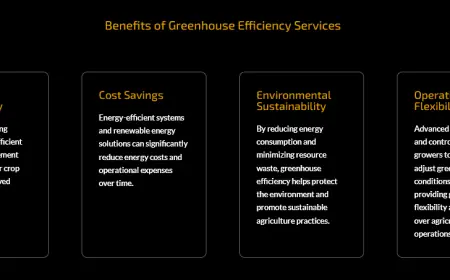5G Infrastructure Market 2029 Report: Size, Share, Growth Drivers & Forecast
The Global 5G Infrastructure Market is at the heart of a new digital revolution, driving the future of communication, connectivity, and data-driven innovation. Valued at USD 20.73 billion in 2023, the market is projected to grow at an astonishing CAGR of 54.71% through 2029. This explosive growth underscores the transformative role of 5G in shaping industries, societies, and economies worldwide.
5G infrastructure represents far more than just a technological upgrade from 4G. It is a fundamental enabler of the next era of digital transformation, characterized by lightning-fast connectivity, ultra-low latency, and the ability to support billions of devices simultaneously. By fueling breakthroughs in autonomous vehicles, smart cities, remote healthcare, and immersive experiences such as augmented and virtual reality, 5G is poised to redefine how people live, work, and interact.
As nations and businesses race to deploy robust 5G networks, the infrastructure supporting this ecosystem—ranging from Radio Access Networks (RAN) to Network Function Virtualization (NFV)—is becoming increasingly vital. This report dives deep into the key drivers, challenges, emerging trends, competitive landscape, and future outlook of the global 5G infrastructure market.
Request For Sample Copy of Report For More Detailed Market insight: https://www.techsciresearch.com/sample-report.aspx?cid=2987#requestform
Industry Key Highlights
-
Exceptional Growth Trajectory
-
Market size of USD 20.73 billion in 2023.
-
Forecast CAGR of 54.71% until 2029.
-
Unprecedented demand across telecom, automotive, healthcare, and industrial sectors.
-
-
Asia Pacific Leadership
-
The Asia Pacific region dominates global adoption, driven by large-scale investments in China, South Korea, and Japan.
-
A growing base of tech-savvy consumers and proactive government initiatives accelerate market expansion.
-
-
Automotive as a Key Application
-
The automotive sector emerged as the leading application segment in 2023.
-
Autonomous vehicles and Advanced Driver Assistance Systems (ADAS) heavily rely on 5G for real-time, low-latency communication.
-
-
Core Network Transformation
-
Network Function Virtualization (NFV) dominates the core network technology landscape.
-
Software-defined networking (SDN) and Mobile Edge Computing (MEC) are reshaping flexibility and scalability.
-
-
Challenges Ahead
-
High deployment costs and complex spectrum regulations remain significant hurdles.
-
Security concerns and infrastructure availability are critical issues for stakeholders to address.
-
Browse over XX market data Figures spread through XX Pages and an in-depth TOC on the "Global 5G Infrastructure Market"@https://www.techsciresearch.com/report/global-5g-infrastructure-market/2987.html
Market Drivers
1. Escalating Demand for High-Speed Connectivity
Modern lifestyles and industries depend heavily on high-bandwidth, low-latency connectivity. From streaming 4K video to competitive online gaming and real-time video conferencing, the demand for faster networks is surging. 5G addresses this gap by delivering speeds up to 100 times faster than 4G, unlocking new digital experiences.
2. IoT Expansion and Smart Ecosystems
With billions of IoT devices entering the market—ranging from smart wearables and home appliances to industrial robots—traditional networks cannot keep pace with the volume and complexity of data traffic. 5G infrastructure is purpose-built to manage massive IoT deployments, offering scalability, efficiency, and reliability for smart homes, smart cities, and smart factories.
3. Industrial Digital Transformation
Enterprises across manufacturing, logistics, healthcare, and energy are embracing Industry 4.0, where automation, real-time analytics, and connected operations are essential. 5G enables machine-to-machine communication, remote monitoring, and predictive maintenance, thus improving operational efficiency and reducing costs.
4. Advancements in Emerging Technologies
Innovations such as autonomous vehicles, AR/VR, drones, and telemedicine require networks that combine high speed, reliability, and low latency. 5G is the backbone that makes these technologies viable at scale, pushing industries into new realms of innovation.
5. Government Initiatives and Policy Support
Governments worldwide are allocating spectrum, incentivizing infrastructure investments, and partnering with telecom operators to accelerate 5G rollout. Policy frameworks that encourage private-public partnerships are fueling deployments in both urban and rural areas.
Market Challenges
1. High Capital Expenditure
Deploying 5G requires massive investments in fiber optics, base stations, small cells, and backend systems. Smaller operators and emerging economies face difficulties managing these costs, slowing down large-scale rollouts.
2. Spectrum Allocation and Regulations
Spectrum availability is a critical bottleneck. Different countries follow varying allocation processes, leading to fragmented rollouts. Harmonizing global spectrum usage remains a challenge.
Emerging Trends
1. Small Cell and Macro Cell Expansion
The proliferation of small cells and macro cells within RAN systems is revolutionizing network density and coverage. Urban areas, stadiums, and transport hubs are seeing rapid deployment to handle high user traffic.
2. NFV and SDN Synergy
NFV and SDN are reshaping how networks are built and managed. Their combination allows for dynamic resource allocation, efficient traffic management, and rapid deployment of new services.
3. Mobile Edge Computing (MEC) Adoption
MEC brings computing closer to the network edge, minimizing latency and improving response times. This is critical for applications like AR, VR, and autonomous driving.
4. Automotive Sector Innovation
The automotive industry is leading 5G adoption, with Vehicle-to-Everything (V2X) communication creating safer, smarter roads. Beyond autonomous driving, vehicles are becoming entertainment and connectivity hubs powered by 5G.
5. Healthcare Transformation
5G is enabling breakthroughs in telemedicine, remote surgeries, and connected medical devices. Low-latency networks make real-time diagnostics and treatment possible even in remote areas.
6. Rise of Private 5G Networks
Enterprises are increasingly adopting private 5G networks to support specific operational needs, such as in factories, ports, and airports, ensuring secure and customized connectivity solutions.
By Region
-
Asia Pacific – Leading with proactive adoption and investments.
-
North America – Strong ecosystem driven by innovation and enterprise adoption.
-
Europe – Focused on harmonized regulations and cross-border initiatives.
-
Middle East & Africa – Emerging with large-scale smart city projects.
-
Latin America – Gradual adoption with emphasis on telecom modernization.
Key market players in the global 5G Infrastructure market are: -
- Qualcomm Technologies, Inc.
- Telefonaktiebolaget LM Ericsson
- Integrated Electronics
- Cisco Systems, Inc.
- Qorvo Inc
- Samsung Electronics Co Ltd
- NEC Corporation
- MediaTek Inc.
- Huawei Technologies Co., Ltd.
- Marvell Technology, Inc.
Customers can also request for 10% free customization on this report.
-
Contact US:
-
Techsci Research LLC
420 Lexington Avenue, Suite 300,
New York, United States- 10170
Tel: +13322586602
Email: [email protected]
Web: https://www.techsciresearch.com/
What's Your Reaction?
 Like
0
Like
0
 Dislike
0
Dislike
0
 Love
0
Love
0
 Funny
0
Funny
0
 Angry
0
Angry
0
 Sad
0
Sad
0
 Wow
0
Wow
0






















































